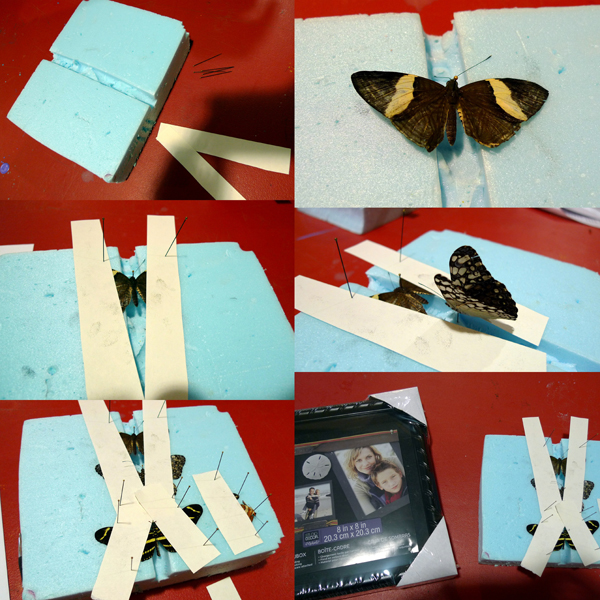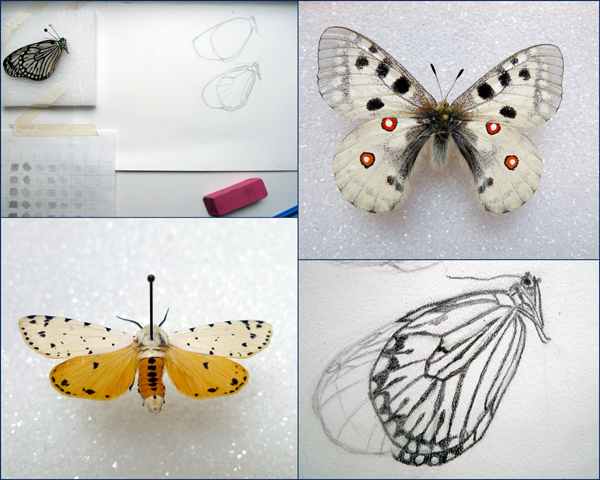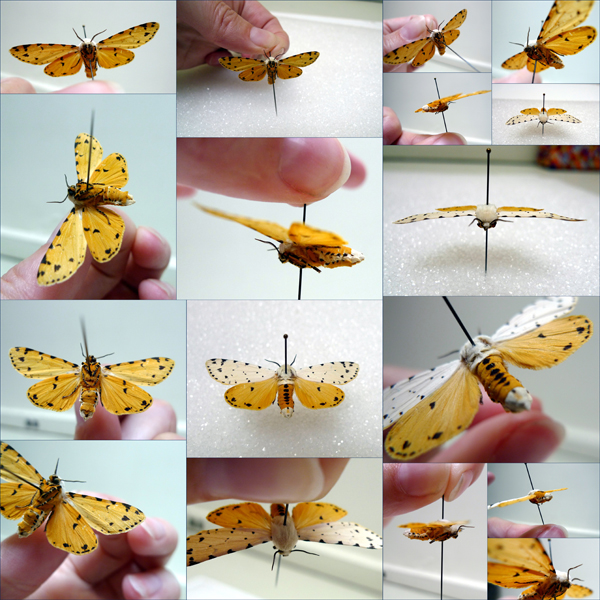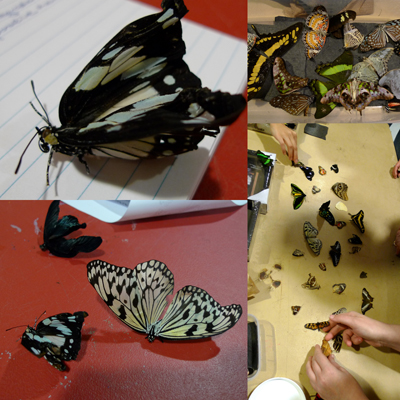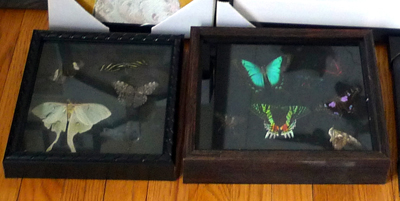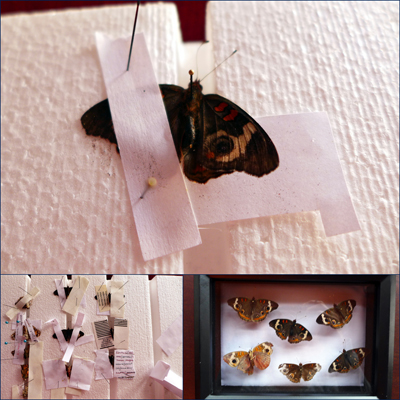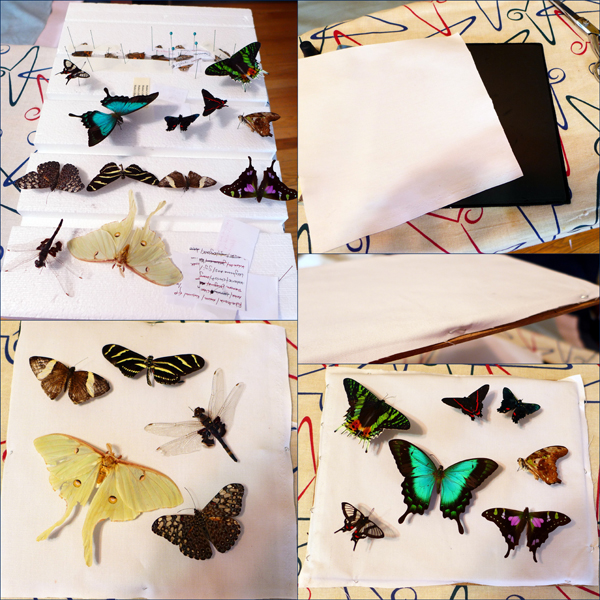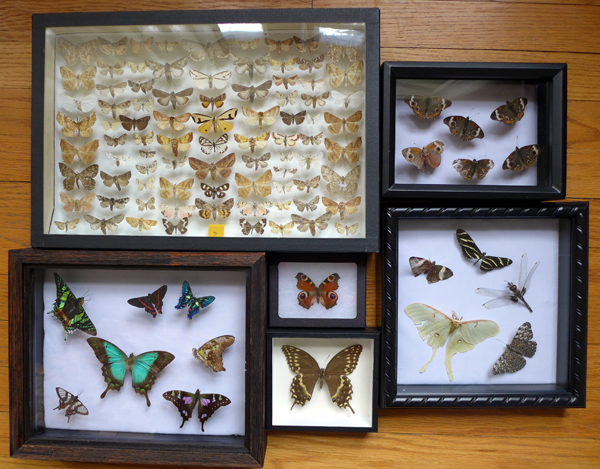Musings and Inspiration
Pinning my Butterfly Specimens
In late 2012 I took a butterfly pinning class at the Peggy Notebaert Nature Museum. Thanks to my drawing workshops I learned to de-sensitize to the morbidity of handling dead butterflies and appreciate the preservation of these lovely creatures.
With the ambition to raise my own I decided it would be good to know how to preserve specimens.
Butterflies at the Judy Istock Haven get frozen when they die to kill any bacteria in them. They can curl up and become brittle when they dry, so they have to be placed in a ‘relaxing chamber’ to make the wings stretch-able again. We got to choose from the relaxed selection and set about pinning.
We were given a styrofoam block with a groove that would fit a butterfly’s abdomen and strips of paper. We were also given special archival pins (that won’t rust over time) to press into the thorax. With the paper strips we gently separated the wings and stretched the butterfly on its board. The instructress was generous and let us pin quite a few. She also sent us home with a shadowbox to place them in.
I ordered more butterflies online and also found a dragonfly on a local park stroll. Mom gifted me with a Luna Moth.
I eventually pinned the Buckeyes as well.
For my home gallery project I decided the black background didn’t do the butterflies justice, so I found a remnant of cotton at Vogue Fabrics to brighten up the shadowboxes.
Here’s my current butterfly collection, including Illinois Moths from Dave’s Down to Earth Rock Shop, a Peacock Butterfly, the Palamedes Butterfly my mom found in Texas and Dave’s Rock Shop mounted for me.
One shadowbox holds specimens from Butterflies and Things: Urani aripheus, Ancyluris meliboeus, Ulysses butterfly (Papilio ulysses), Chorinea sylphina and Graphium weiskei arfakensis. The other holds a mystery butterfly, a smiley faced Zebra Longwing, the Black Saddlebags skimmer, a Luna Moth, and Hamadryas chloe.
Of course nothing beats the Field Museum’s collection!

